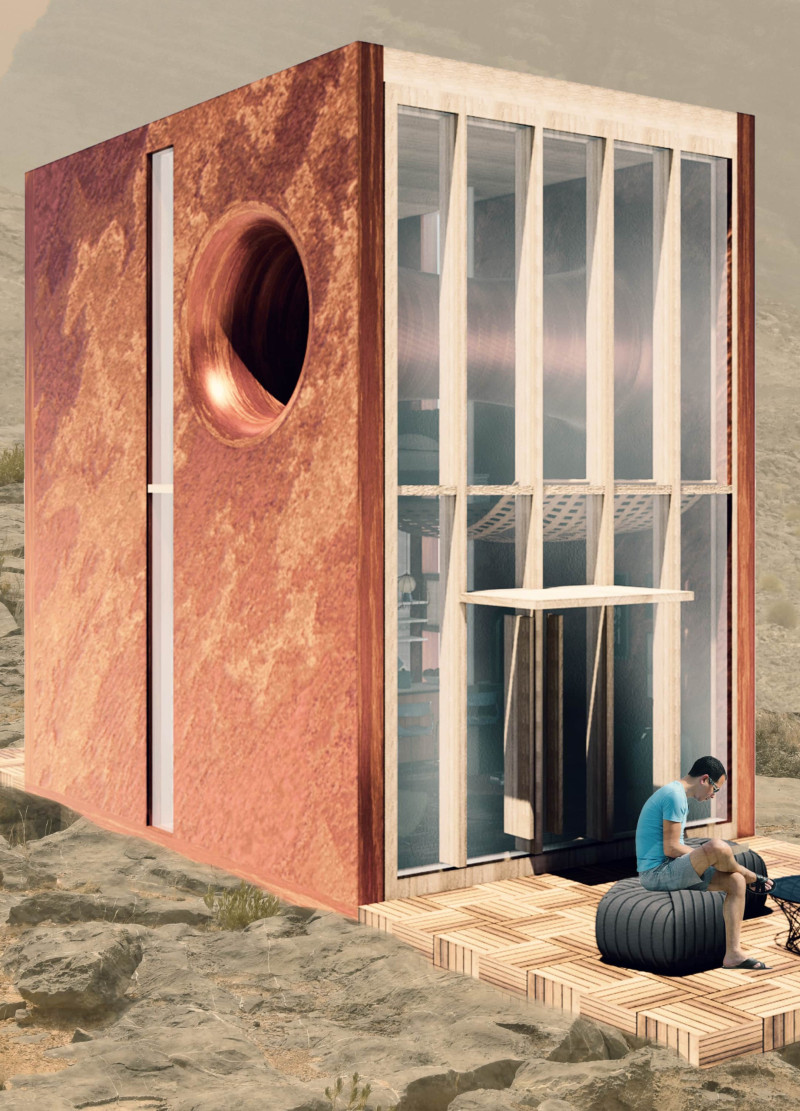5 key facts about this project
The design of a self-sustainable micro home demonstrates a contemporary approach to eco-friendly living, integrating various renewable energy sources within a compact structure. Situated in different geographical contexts, such as cliffs or urban areas, the home aims for energy independence while fostering a connection to the surrounding environment. An efficient layout optimizes space for everyday use, supporting a sustainable lifestyle.
Architectural Form
The micro home features a well-thought-out layout that makes the best use of available space. Essential areas include an entrance, bathroom, kitchen, and living room. The living room incorporates transformable furniture, providing flexibility for multiple functions. This type of adaptability is significant in modern design, where maximizing compact spaces is increasingly important.
Sustainable Features
Key to the design is a strong commitment to sustainability. The building’s orientation maximizes natural light with a curtain wall on the southern side, which helps capture sunlight while minimizing heat loss. The northern façade, made from timber, enhances both accessibility and thermal performance. A wind tunnel, utilizing the Venturi effect, efficiently captures energy from the wind, allowing the home to generate electricity even in light breezes.
Water Management
This micro home includes effective systems for water management. A rainwater collection and filtering system supports its self-sufficiency, while solar panels on the roof provide additional energy. A wood-burning stove is integrated for both heating and cooking. Together, these features contribute to a low carbon footprint and align with current environmental standards.
Material Use
The choice of materials for construction plays a crucial role in the home’s overall function and aesthetics. Timber framing provides structural stability while promoting a connection to nature. This is complemented by a concrete foundation, ensuring the home’s durability. The lateral walls, designed with metal sheet façades, improve aerodynamics and energy efficiency.
Each of these design elements works together to create a living space that prioritizes comfort and ecological responsibility. The architectural language reflects an awareness of its surroundings and context, ensuring it meets the needs of modern living.






















































